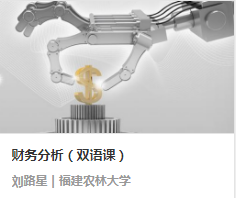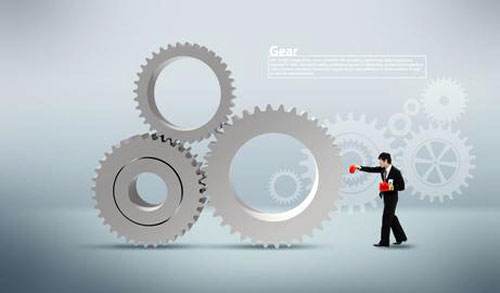
当前课程知识点:History of Western Civilization 全英文西方文明史 > Chapter 3 Ancient Civilization 1 > 3.2 Early Republic > 3.2.2 Video
返回《History of Western Civilization 全英文西方文明史》慕课在线视频课程列表
3.2 Early Republic 509BC-146BC
Hi guys, this is the Second part of Chapter Three, the Early Republic
1. Remember the historical event of Rape of Lucretia in 509 BC? Lucretia killed herself. That caused a revolution. The last king was overthrown and exiled, Roman Republic was established, and Lucretia’s husband Lucius Junius Brutus became one of the two first consuls. This is a bust of Lucius Junius Brutus.
2. What is a republic?
Roman Republic was the first republic in the world. In today’ would 159 of the 206 sovereign states use the word "republic" as part of their official names. There are three characters of a republic. First “everyone is equal before the law” as the Greek statesman Pericles said in his funeral oration. All people are citizens, no noblemen no commoners. The country is a "public matter", not the property of the rulers. Second the head of the country is elected, not a monarch; monarch is the king, queen, emperor, or empress. The third is rule of law; in a republic elected individuals represent the citizens and exercise power according to the rule of law under a constitution.
The term republic is a Latin word (res publica), society of the Roman Republic is highly hierarchical. People have different ranks or positions, depending on how important they are. The ruling class is patricians, According to Livy, the first 100 men appointed as senators by Romulus were referred to as "fathers" (Latin "patres"), and thus the descendants of those “fathers” became the patrician class. In the early Roman Republic only patricians could be the senator, consul and other magistrate. In ancient Rome, a magistrate was one of the high ranking government officers; he possessed both judicial and executive power. Another class in the society is Plebeians, also called plebs. They were the commoners.
3. The structure of the Roman Republic government
Let’s look at the structure of the Roman Republic government
Consuls
The highest leader of the Roman Republic was two consuls, elected annually by the citizens and advised by a senate. They share the supreme civil and military authority, through the use of imperium, the supreme power. They had the power to veto one another. If someone in authority vetoes something, they forbid it, or stop it from being put into action. The term of consulship was only one year. At the end of their term, the ex-consuls became senators for life. In times of war a single consul could be appointed as a dictator for 6 months. A dictator is a political leader who possesses absolute power. In today’s English, a dictator is a ruler who has complete power which was obtained by force and is used unfairly and cruelly. We call someone like Adolf Hitler a dictator. But in ancient Rome the term "Dictator" did not have the negative meaning as it has today.
Senate
The first king of the Roman Kingdom Romulus established the Senate as an advisory council of the king. The 300 members of Senate called Senators, Senator in Latin means "the elder" or "old man", thus senate is Assembly of Elders. Senate was an advisory body to the consuls, and it had no true legislative power. Senators served for life unless they were removed for public or private misconduct.
Assembly
An assembly is a sovereign authority, with the power to declare war, to enact or reject laws, and to elect top leaders. Romans believed it was the People of Rome who held the ultimate sovereignty, thus exercising this sovereign power was the purpose of the assembly. But Roman assemblies did not consist of the whole Roman people; only adult male citizens were permitted to participate.
4. Assembly of the Roman Republic
We mentioned during the Roman Kingdom kings were elected by the Curiate Assembly, the principal assembly of the people of Rome. It had legislative power, the right of making and passing laws. During the first two decades of the Roman Republic, The Curiate Assembly was still the principal assembly. Gradually the legislative authority shifted to two new assemblies, the Centuriate Assembly and the Tribal Assembly.
The Assembly of Centuries or "Army Assembly" was composed of all members of the army. In ancient Roman army a century was a small unite consisting of approximately 100 soldiers.
The Tribal Assembly or Assembly of the People composed of all citizens. All citizens were organized into 35 tribes, each tribe had one vote. Each tribe voted separately, decisions were made by majority vote.
5. The Struggle of the Orders or the Conflict of the Orders was a political struggle between the Plebeians and Patricians. Finally the plebs created Plebeian Assembly and elected their own top official called Plebeian Tribune. Tribunes were declared sacred to gods. In 450 BC the Law of the Twelve Tables was declared. It became the foundation of Roman law. And it recognized the basic rights of all citizens. In this painting Roman civilians were examining the Law on the Twelve Tables.
6. In 367BC the consulship was finally opened to plebs that means a commoner could be elected to be a consul. In 287BC, the Plebeian Council became an assembly of all citizens, including both patricians and Plebeians.
Celtic invasion of Italy (390–387 BC)
In 390 BC, several Celtic tribes invaded Italy from the north. They defeated the Roman army of approximately 15,000 troops, pursued the fleeing Romans back to Rome, and sacked the city. Sack is the plundering of a place by an army or mob, usually involving destruction, slaughter, etc. Finally they were driven off or bought off.
7. Roman expansion into the whole Italy (343–282 BC)
During this time Roman Republic conquered the whole Italian Peninsula, and three Mediterranean islands of Sicily, Sardinia and Corsica. But this was not enough to them, the Romans were very ambitious, they were ready to fight the other two Mediterranean powers: Carthage and the Greek kingdoms in the Hellenistic world.
Key words: Republic, patrician and Plebeians, Consuls, Assembly, Plebeian Tribune
This is the second part of Chapter Three
返回《History of Western Civilization 全英文西方文明史》慕课在线视频列表
Hi guys This is the second part of
Chapter Three
the Early Republic
Remember the historical event
the Rape of Lucretia in 509 BC
Lucretia killed herself
That caused a revolution
The last king
was overthrown and exiled
Roman Republic was established
and Lucretia’s husband Brutus
became one of the two first consuls
This is a bust
of Lucius Junius Brutus
What is a republic
Roman Republic
was the first republic in the world
In today’s world 159
of the 206 sovereign states
use the word republic as part of
their official names
There are three characters of a republic
First everyone is equal before the law
as the Greek statesman Pericles
said in his funeral oration
All people are citizens
no noblemen no commoners
The country is a public matter
not the property of the rulers
Second the head of the country
is elected not a monarch
Monarch is the king queen
emperor or empress
The third is rule of law
In a republic elected individuals
represent the citizens
and exercise power according
to the rule of law
under a constitution
The term republic is a Latin work
Society of the Roman Republic
is highly hierarchical
People have different ranks
or positions
depending on how important
they are
The ruling class is patricians
According to Livy
the first 100 men appointed
as senators
by Romulus were referred
to as fathers
and thus the descendants
of those fathers
became the patrician class
In the early Roman Republic
only patricians could be the senator
consul and other magistrate
In ancient Rome
a magistrate was one of the
high ranking government officers
He possessed both judicial
and executive power
Another class in the society is
Plebeians also called plebs
They were the commoners
Let’s look at the structure
of the Roman Republic government
Consuls
The highest leader of the
Roman Republic was two consuls
elected annually by the citizens
and advised by a senate
They share the supreme civil
and military authority
through the use of imperium
the supreme power
They had the power to
veto one another
If someone in authority
vetoes something
they forbid it or stop it from
being put into action
At the end of their term
the ex-consuls became senators for life
In times of war
a single consul could be appointed
as a dictator for 6 months
A dictator is a political leader
who possesses absolute power
In today’s English a dictator is a ruler
who has complete power
which was obtained by force
and is used unfairly and cruelly
We call someone like A
dolf Hitler a dictator
But in ancient Rome
the term Dictator did not have
the negative meaning
as it has today
Senate
The first king of the
Roman Kingdom Romulus
established the
Senate as an advisory
council for the king
The 300 members of Senate
called Senators
Senator in Latin mean the
elder or old man
thus senate is Assembly of Elders
Senate was an advisory body to the consuls
and it had no true legislative power
Senators served for life
unless they were removed
for public or private misconduct
Assembly
An assembly is a sovereign
authority with the power
to declare war to enact or
reject laws and to elect top leaders
Romans believed it was the People of Rome
who held the ultimate sovereignty
thus exercising this sovereign power
was the purpose of the assembly
But Roman assemblies did not consist
of the whole Roman people
Only adult male citizens
were permitted to participate
Assembly of the Roman Republic
We mentioned during the Roman Kingdom
Kings were elected by the
Curiate Assembly
the principal assembly of the people of Rome
It had legislative power
the right of making and passing laws
During the first two decade
of the Roman Republic
the Curiate Assembly
was still the principal assembly
Gradually the legislative authority
shifted to two new assemblies
the Centuriate Assembly
and the Tribal Assembly
The Assembly of Centuries
or Army Assembly
was composed of all members
of the army
In ancient Roman army a century
was a small unite
consisting of approximately 100 soldiers
The Tribal Assembly
or Assembly of the People
composed of all citizens
All citizens were
organized into 35 tribes
Each tribe had one vote
Each tribe voted separately
Decisions were made
by majority vote
The Struggle of the Orders
or the Conflict of the Orders
was a political struggle
between the Plebeians and Patricians
Finally the plebs created
Plebeian assembly
and elected their own top
official called Plebeian Tribune
Tribunes were declared sacred to gods
In 450 BC the Law of the Twelve
Tables was declared
It became the foundation of Roman law
And it recognized
the basic rights of all citizens
In this painting Roman civilians
were examining the Law
on the Twelve Tables
In 367BC the consulship
was finally opened to plebs
that means a commoner could be
elected to be a consul
In 287 BC the Plebeian Council
became an assembly of all citizens
including both patricians and Plebeians
In 390 BC several Celtic tribes
invaded Italy from the north
They defeated the Roman army
of approximately 15000 troops
pursued the fleeing Romans
back to Rome and sacked the city
Sack is the plundering
of a place by an army or mob
usually involving destruction
slaughter etc
Finally they were driven off
or bought off
During this time
Roman Republic conquered
the whole Italian Peninsula
and three Mediterranean islands
of Sicily Sardinia and Corsica
But this was not enough to them
The Romans were very ambitious
They were ready to fight the
other two Mediterranean powers
Carthage and the Greek kingdoms
in the Hellenistic world
Key words
Republic
Patrician and Plebeians
Consuls
Assembly
Plebeian Tribune
This is the second part of Chapter Three
-1.0 Introduction
--1.0.3 Exercises
-1.1 Greek Bronze Age and Dark Age
--1.1.3 Exercises
-1.2 Greek Gods
--1.2.3 Exercises
-1.3 Archaic Greece
--1.3.3 Exercises
-1.4 Athens and the Persian Wars
--1.4.3 Exercises
-1.5 Discussion
-2.1 War and politics in the fifth century BC
--2.1.3 Exercises
-2.2 Greece in the fourth century BC
--2.2.3 Exercises
-2.3 Classical Greek Philosophy
--2.3.3 Exercises
-2.4 Athenian Drama
--2.4.3 Exercises
-2.5 Alexander the Great and Hellenistic World
--2.5.3 Exercises
-2.6 Discussion
-3.1 Roman Kingdom
--3.1.3 Exercises
-3.2 Early Republic
--3.2.3 Exercises
-3.3 Mid-Republic
--3.3.3 Exercises
-3.4 Late-Republic
--3.4.3 Exercises
-3.5 End of the Republic
--3.5.3 Exercises
-3.6 Discussion
-4.1 Pax Romana 1
--4.1.3 Excecises
-4.2 Pax Romana 2
--4.2.3 Excecises
-4.3 Crisis of the Third Century and Constantine
--4.3.3 Excecises
-4.4 The Victory of Christianity
--4.4.3 Exercises
-4.5 The Fall of the Roman Empire
--4.5.3 Exercises
-4.6 Discussion
-5.1 Early Middle Ages
--5.1.3 Excecises
-5.2 Carolingian Dynasty
--5.2.3 Excecises
-5.3 High Middle Ages
--5.3.3 Excecises
-5.4 Late Middle Ages 1
--5.4.1 Excecises
-5.5 Late Middle Ages 2
--5.5.3 Excecises
-5.6 Discussion
-6.1 The Renaissance
--6.1.3 Exercises
-6.2 Protestant Reformation
--6.2.3 Exercises
-6.3 Italian Wars and Rise of Russia
--6.3.3 Exercises
-6.4 Age of Discovery
--6.4.3 Exercises
-6.5 French War of Religion and Russia’s Time of Trouble
--6.5.3 Exercises
-6.6 Discussion
-7.1 The Thirty Years War
--7.1.3 Exercises
-7.2 English Revolution
--7.2.3 Exercises
-7.3 Three Absolute Monarchs
--7.3.3 Exercises
-7.4 Dutch Golden Age
--7.4.3 Exercises
-7.5 Science and Culture in the 17th Century
--7.5 Text
--7.5.3 Exercises
-7.6 Discussion
-8.1 The United Kingdom
--8.1.3 Exercises
-8.2 The American Revolution
--8.2.3 Exercises
-8.3 The French Revolution
--8.3.3 Exercises
-8.4 Age of Enlightenment
--8.4.3 Exercises
-8.5 West after the 18th century
--8.5.3 Exercises
-8.6 Discussion


